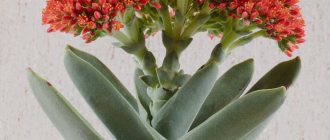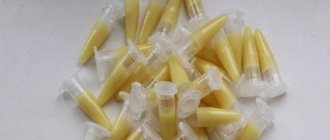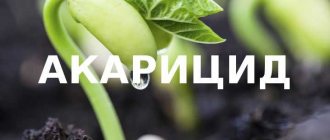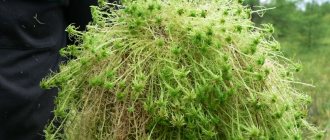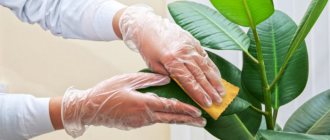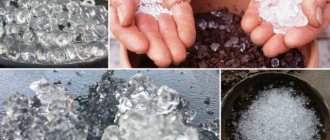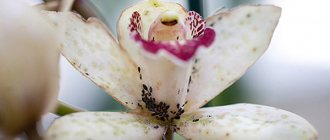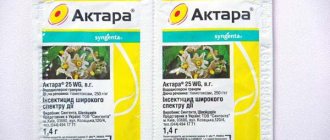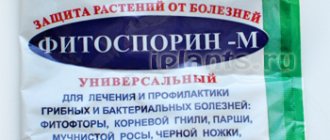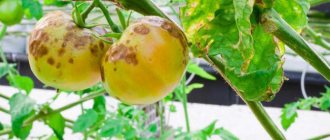Loading…
Loading…
Almost all green spaces on the planet suffer from parasites and various diseases. Fungicides for indoor plants, the names and composition of which inspire confidence, are effective help. Chemicals protect against infectious diseases caused by pathogenic microorganisms. The active components paralyze their vital functions, bringing the dull plant back to life. There are forms that kill parasites at the cellular level. Let's get acquainted with the features and names of fungicides for indoor plants, which are popular among lovers of home flora.
Classification
Fungicidal preparations for plant protection are presented on the market in a wide range. The classification of fungicides will help you choose the right product.
Depending on chemical properties
From the point of view of chemical composition, fungicidal preparations are:
- inorganic – agricultural products containing copper, sulfur and other elements;
- organic (contain predominantly heterocyclic bonds with nitrogen-containing derivatives).
Depending on the effect on the pathogen
Based on their mode of action on pathogenic microflora, fungicides are divided into preventive and therapeutic.
The first type serves to prevent infection and is used for early spring disinfection of plants and pre-sowing soaking of seeds.
Fungicidal treatment agents are aimed at destroying the phytopathogen outside and inside the plant organism.
By purpose of use
The use of fungicides involves solving various problems:
- Disinfection of land for planting. Fumigants in cans are better suited for disinfecting greenhouses, but powder and liquid products are also effective.
- Disinfection of seeds, tubers before sowing, as well as seedlings before picking. The seed must be treated with preparations for root rot.
- Treatment for preventive purposes at the stage when crops are actively growing. Protective medications are used to prevent infection.
- Control of overwintered pathogens and pests. Contact fungicides are used mainly in the phase of absence of green mass in spring and autumn.
Depending on the nature of distribution within plant tissues
The active substances of agricultural preparations can remain outside or enter the tissues and cells of the plant. Based on this principle, they distinguish:
- Contact fungicides. The preparations form a protective cover on the surface of the plant crop without entering the plant body. Contact of the product with a phytopathogen leads to its destruction.
The duration of exposure depends on the weather, since precipitation reduces the effectiveness.
- Systemic fungicides. The active substance enters the vascular system of the pathogen, destroying it. They take effect after a couple of hours and are effective regardless of weather conditions.
Both groups can be used to prevent and treat diseases.
The most common fungal plant diseases
The presence of fungus in a plant is most often indicated by external symptoms. A white coating and pads of a rusty hue, colored spots and sores, fragments of rot and lumpy growths may appear on the greenery. In addition, fungi cause plants to wither, become deformed, dry out, become thinner, become overgrown with tumors and stop bearing fruit. In the case of lawns and grass, bald spots form on the ground. Dozens of different types of fungi cause any of these symptoms. This system is not easy to streamline, but still the most common diseases received their popular and scientific names. Here are some of them.
Powdery mildew. This is a universal villain that affects the leaves, fruits, stems and flowers of plants. A white coating (mycelium) can completely cover a garden rose or grapevine in a couple of days. The disease takes the longest to kill fruits: they rot and crack. Powdery mildew especially loves young shoots. Pumpkins, peaches, gooseberries, grains, roses, even sugar beets... who doesn’t suffer from it!
Snow mold. This is the enemy of all lovers of natural lawns and tall grass. “Snow mold” usually appears in early spring, after the snow melts. It spreads in circles 3-12 inches in diameter. When these circles “multiply”, the lawn may completely die. First, the lawn will be covered with pink, white or gray mold... then the mushrooms will draw all the juices out of the grass, and it will die. Most often, meadow and reed fescue, perennial ryegrass and meadow bluegrass suffer from this fungus.
Root rotting. These diseases, such as rhizoctonia and black rot, are dangerous for most plants. Fungi undermine the roots of indoor and garden greenery. You won’t know about this for a long time: you’ll just watch the gradual withering of the plant. An insidious disease will turn the root system into black dust or rusty dry lashes.
"Spotted" fungus on leaves. A disease that affects vegetables. Fatty dark spots form on the leaves. Most often, tomatoes and peppers, potatoes, asparagus, and rhubarb suffer from them. This “beauty” directly affects the yield of vegetables. Although the fruits themselves rarely suffer.
There are also various fungi that attack grass. It may become covered with rust-colored blisters and red-brown rings (Fusarium disease). The lawn may turn brown and disappear under small clouds of cotton (Pythium disease).
Prevention of fungal diseases
Fungi love high humidity, stagnant weather and proximity to other plants. Therefore, it is necessary to maintain a certain interval between plantings, and also to rid them of excessive watering and poor air circulation. These rules are especially relevant for greenhouse plants. You need to regularly monitor the cleanliness of the soil and dispose of dying plants.
American scientists who have studied this issue ask everyone to be careful with mulching and pruning plants (mistakes during these operations can lead to infection). They also call the best method of prevention... the purchase of specially bred varieties that are resistant to fungi. Sterile pots will protect the roots from fungi, control the purchased soil mixture - a competent watering system that eliminates stagnation of water.
If you notice a fungus on a separate tree or bush, it is important to remove it in time. Professional gardener Mary Bernard believes that when removing infected tissue, you should avoid trimming branches and leaves, because any wound will become an “open gate” for new parasites. It is better to gently pick off leaves, petioles and bark. She also advises avoiding overhead watering, which spreads spores and makes the leaf more vulnerable. It is better to pour moisture directly to the root. The expert calls sulfur, copper, and fungicidal soap the best organic fungicides for prevention. However, all these are not the strongest remedies, so their application must be repeated regularly, says Mary Bernard.
Operating principle
Fungicides have almost the same effect on pathogens:
- inhibit the respiration process and energy exchange of fungi;
- counteract the division of phytopathogen cells;
- promote the breakdown and elimination of pathogen toxins;
- help build immunity against more infections.
Among fungicides, microbiological preparations for plants are classified into a separate group; they work differently:
- promote the production of mold-killing substances by plant cells;
- active microorganisms effectively compete with parasitic strains, suppressing their development.
How to work with contact fungicides?
To protect plants from infection, contact fungicides are used. They act externally, forming a microfilm on stems and leaves. Such drugs are optimal for prevention and at the onset of the disease.
These products are often used for crops that are most susceptible to fungal diseases: potatoes, tomatoes, peppers, cucumbers, eggplants, strawberries, apple trees and many indoor plants.
Before treating any crops, prepare a fungicide solution. The dosage and method of preparation are always indicated on the packaging.
You can treat the plant early in the morning or after sunset if there is a stable lack of precipitation.
Treatment of tomatoes, peppers and cucumbers with fungicide against various rots is carried out in several stages:
- soaking before sowing;
- disinfection of seedling roots before picking by immersion in a solution;
- spraying before flowering.
Spraying garden trees, shrubs, roses and other perennial flowers with a protective fungicide is carried out several times:
- in spring before buds open;
- during the growing season before the formation of buds;
- along a bare trunk in autumn.
The roots of the seedlings are dipped in the solution for 1-2 hours before planting in the ground.
It is best to disinfect greenhouse soil after harvesting vegetables or in early spring.
Indoor flowers are treated when transplanted and symptoms of the disease appear. To do this, you should choose safe fungicides from the group of biological products.
Advantages and disadvantages
Fungicides used in the garden have a number of positive characteristics. The main advantages include the following:
- substances penetrate inside plants in a short period and have an active protective effect;
- due to their resistance to moisture, fungicides are not washed off with water even in heavy rain;
- after treatment, pathogens are eliminated in all tissues;
- influence on a wide range of fungal diseases.
In addition to the obvious advantages, the drugs have several disadvantages.
As a result of disinfection, a partial disruption of the favorable microflora occurs, which can affect the growth and development of green spaces. If fruit plants are processed, the harvested crop can be eaten only after some time.
Principles of drug selection
To disinfect seeds, it is better to choose a protective fungicide. The most popular are broad-spectrum agricultural products with several active ingredients.
Biological products that are allowed for use during the season are excellent for prevention. They are optimal for the garden and home because they do not pose a danger to living organisms.
For the treatment of advanced forms of the disease, systemic drugs are more effective.
It is important to remember that it is not recommended to use one drug; it is better to use fungicides in turn that differ in their mechanism of action. So during the season you need to purchase several agricultural products.
Chemical groups of systemic plant protection products (analogs are given in parentheses)
- Azoles (triazoles) – Vectra (Granite), Skor (Bogard, Dividend), Topaz, Tilt (Bumper), Folicur, Alto, Baytan, Bayleton, Sportak, Impact.
- Strobirulins - Zato, Strobi, Amistar.
- Benzimidazoles – Fundazol (Benomil), Derozal (Colfugo-Super), Tecto (Titusim),
- Phenylamides - Apron.
- Anilidopyrimidines – Chorus.
- Pyrimidinylcarbinols - Rubigan.
- Dithianols – Delan.
- Phosphonates – Alyette (Alyufit).
- Phthalamides – Merpan, Folpan.
Like insects, fungi on plants develop resistance to all fungicides of one chemical group at once.
The best plant protection options are:
- alternating contact and systemic fungicides;
- alternating 2-3 systemic drugs, but from different chemical groups.
For many years now, mixed fungicides have been produced, consisting of 2-3 active ingredients, and they are:
- simultaneously contact and systemic action (Kurzat R. Odram, Acrobat MC, Ridomil Gold MC, Sandofan M8, Tattu, Oksikhom, Pilon, Artemi S, Poliram DF, Artserid, Avixil, others). They are used as contact preparations up to 4 times per season with the concentration of the working solution usually not lower than 0.3-0.4% (30-40 g per 10 liters of water). Please note that lower concentrations of solutions lead to poor results. So this is exactly the case when “you can’t spoil the porridge with oil”... Prepare solutions of fungicides of this group, following the recommendations of the instructions, but it is even better to make them more concentrated than written.
- only systemic action, may belong to the same chemical group or to completely different ones. This is done only in order to expand the spectrum of action on harmful fungi. Such fungicides include Mikal, Archer, Ryder, Alto-Super, Falcon, Thanos, and others. They are used no more than twice per season.
Precautionary measures
When working with fungicidal preparations, you should follow the following safety rules:
- Be sure to use protective equipment to prevent contact of the substance with the skin, eyes and mouth.
- Equipment and protective equipment are washed with water and detergent after use.
- Agricultural products should be stored in a dry place without access to children and animals.
- If symptoms of intoxication occur, seek emergency medical help.
To protect plants from infection and save your harvest, it is recommended to use fungicides. However, you should remember that in order not to risk your own health and the quality of the harvest, you should strictly follow the instructions for using agricultural products.
Rules of application
When cultivating soil or plants, the farmer first studies the instructions. Dilution of a fungicide begins with determining the dosage. The finished working mixture is used immediately after mixing.
Most fungicides are recommended to be mixed in a special container so that use is comfortable and there is no need to waste time on transfusion and additional steps.
Treatment with fungicides is carried out only for their intended purpose in compliance with the rules:
- Urgent intervention can be carried out only with systemic or combined substances.
- Treatment should not be carried out in the presence of strong winds or rainy weather. This reduces the efficiency level to zero.
- Work on spraying and applying fungicides can only be carried out at above-zero temperatures. +1 and 0 on a thermometer are also suitable.
